Yesterday I ticked another vehicle off my transport bucket list: hovercraft. Inevitably, while being whisked across the Solent by a descendant of Christopher Cockerell’s SR.N1, my mind turned to the question of why these marvelous machines still lack a serious dedicated PC sim.
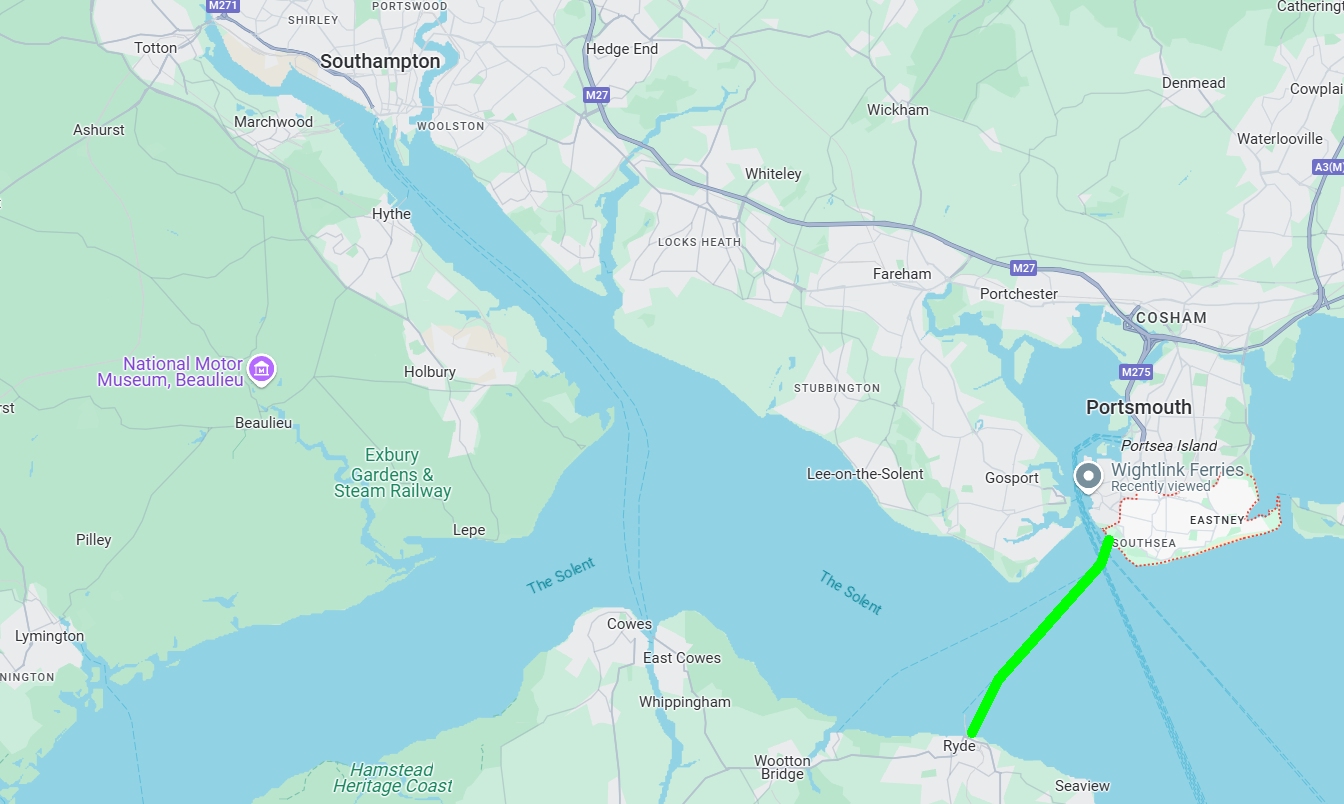
Running hourly during the winter and half-hourly during the summer, the service between Southsea near Portsmouth and Ryde on the Isle of Wight is, according to its operator, Hovertravel, “the world’s only year-round passenger hovercraft service”.
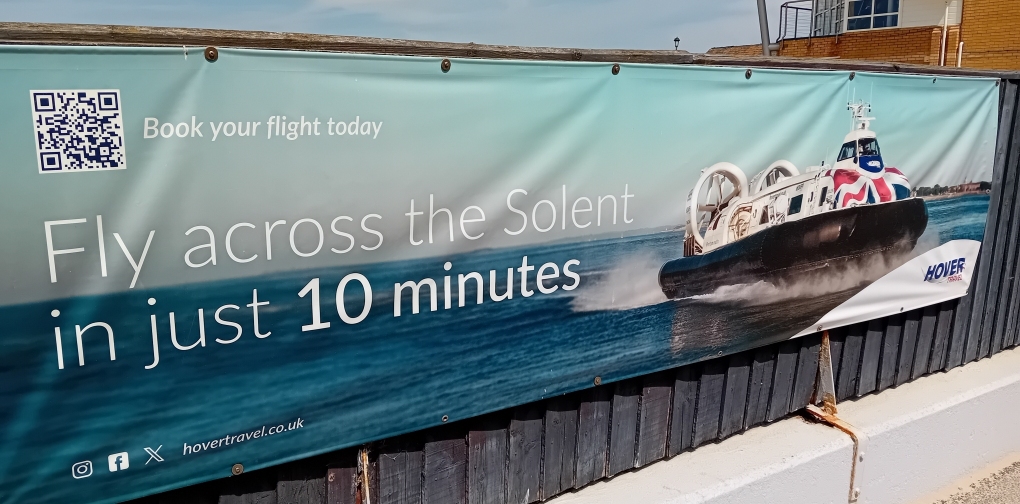
Glance at a timetable and it’s easy to understand why, sixty years after its inauguration, the service is still going strong. While WightLink’s ‘FastCat’ catamarans take twenty-two minutes to traverse the seven kilometres of busy brine between the mainland and the island, Island Flyer and Solent Flyer, Hovertravel’s pair of Griffon 12000TDs, do the journey in ten.

Anyone accustomed to air travel is likely to find a HoverTravel “flight”* both strangely familiar and refreshingly different. After purchasing a ticket in the beach-adjacent booking office in Southsea or Ryde, you pass directly (there’s no security or baggage rigmarole) into a small departure lounge to await your locally-made magic carpet.
* Hovertravel prefer air travel terminology to maritime-speak.
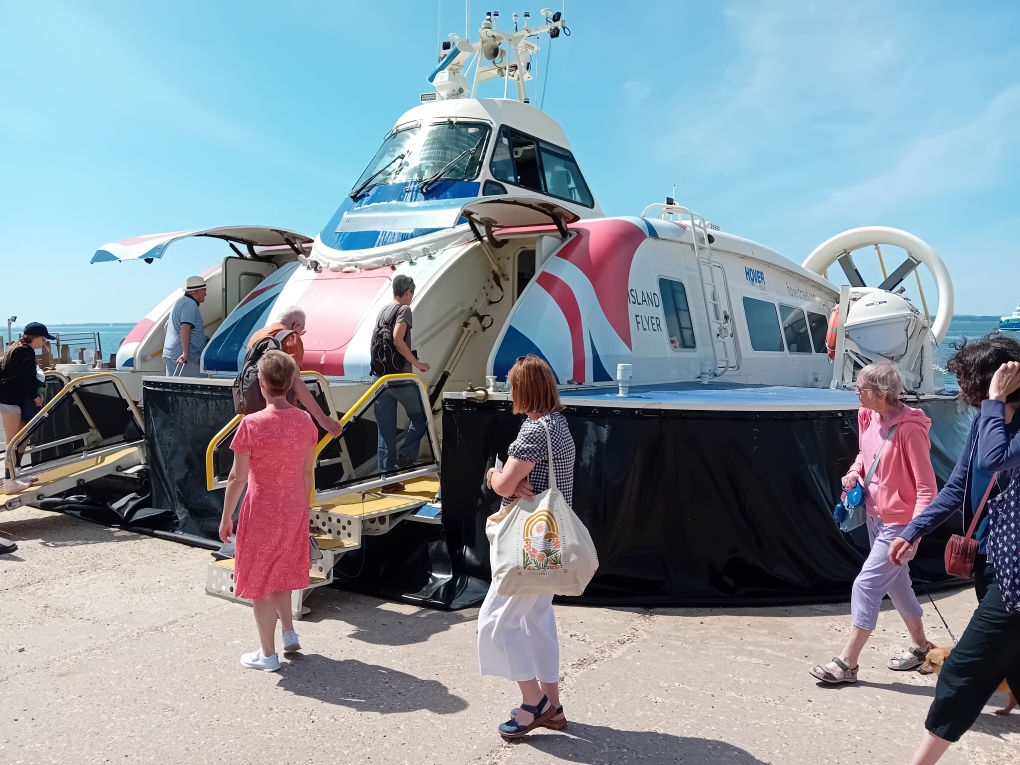
Boarding is a delightfully informal/speedy affair. Once the incoming machine has disgorged its contingent of up to eighty passengers, lounge doors are opened and ticket-holders stroll the twenty metres or so to the dual forward entrances of the waiting hovercraft.
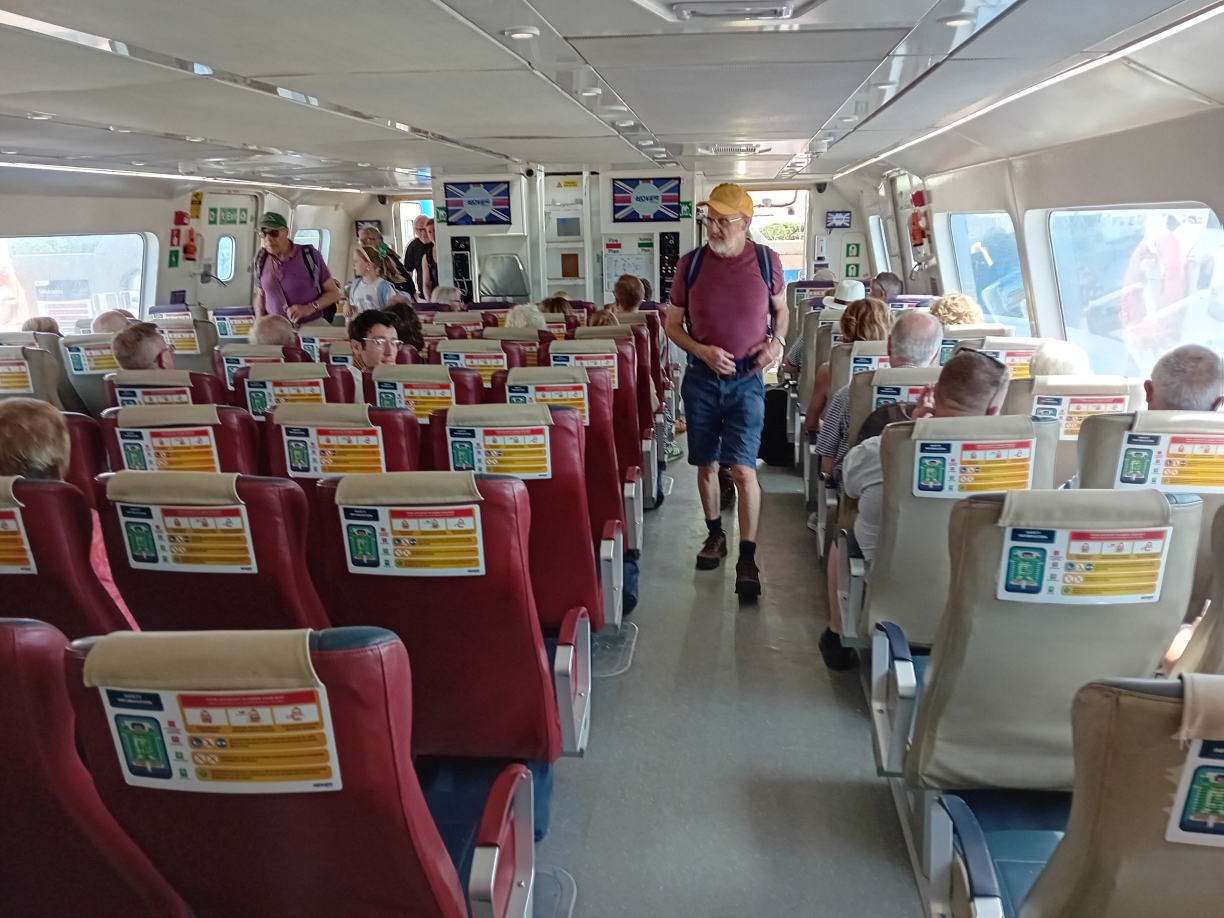
Inside the 12000TD feels like a truncated airliner. Accessed via wide aisles, seats are unassigned, seatbelt- and table-less, and unobstructed by overhead lockers (large items of luggage can be stowed in an area between the doors). Choose to sit at the centre of the front row and it’s possible you may get tantalising glimpses up into the ‘front office’ during the flight. Like the men that flew first-generation airliners such as the Armstrong Whitworth Argosy, 12000TD pilots sit above their passengers in a ladder-accessed cockpit.
The simplicity of Hovertravel’s termini and the maneuverability of their machines means there’s no equivalent to pushback or taxiing. Moments after the pair of MAN V12 diesel engines have coughed into life, the12000TD rises dramatically on its cushion of air, and, in one splendidly fluid movement, pivots to face its destination while heading for the water.
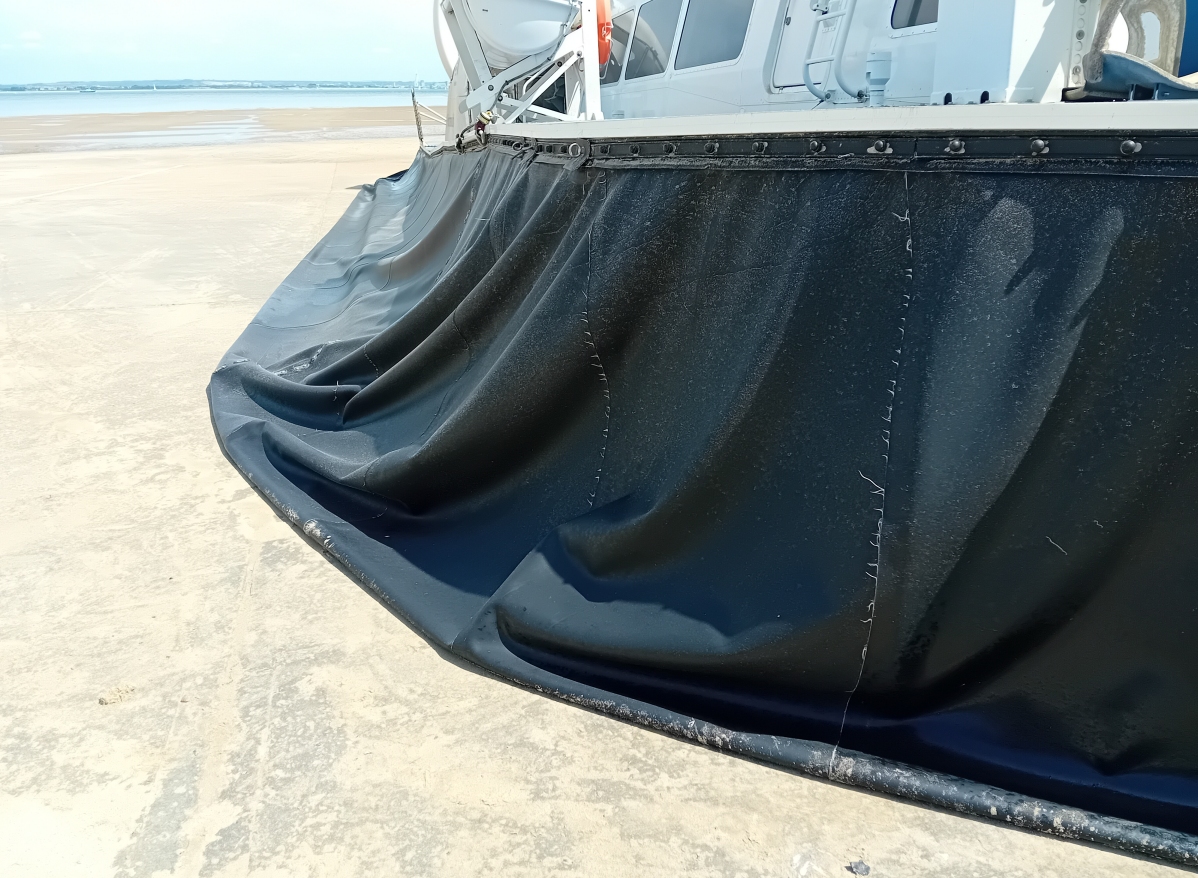
Before you know it, the flight attendant has completed their short safety briefing, and you’re bowling along at a speed of around forty knots. On the breezy summer day I traveled, the ride was agreeably smooth. Smooth enough to play a game of travel jenga or apply make-up accurately? Possibly not, but anyone prone to travel sickness would, I’m sure, have been untroubled.
On both crossings, although I was seated near the bulkhead that separates the passenger compartment from the engines, engine and prop noise, while clearly audible, wasn’t so intrusive it made conversation or concentration difficult. One of the reasons, the far-from-stealthy 12000TD doesn’t deafen Ryde and Southsea residents twenty times a day during the summer, is that its five-bladed propellers nestle snugly inside ducts.
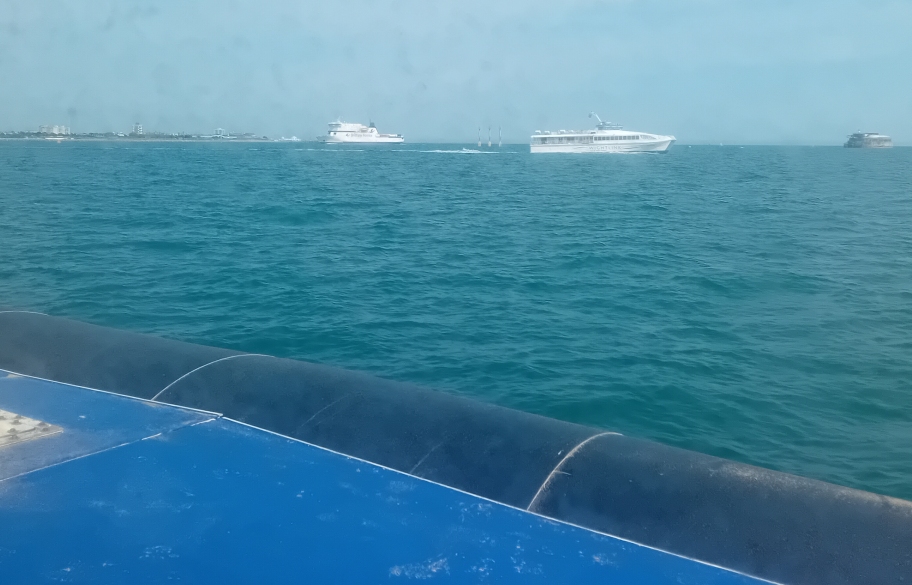
To best appreciate a hovercraft’s singular ‘flight model’ and to get a sense of the traffic challenges Hovertravel pilots face daily, I’d recommend sitting in one of the 12000TDs twenty-two window seats during a ‘flight’. Looking along the stepped flank of my sea skimmer as it made for the mainland, the regular rudder inputs necessary to keep our naturally wayward craft headed in the desired direction were particularly noticeable.
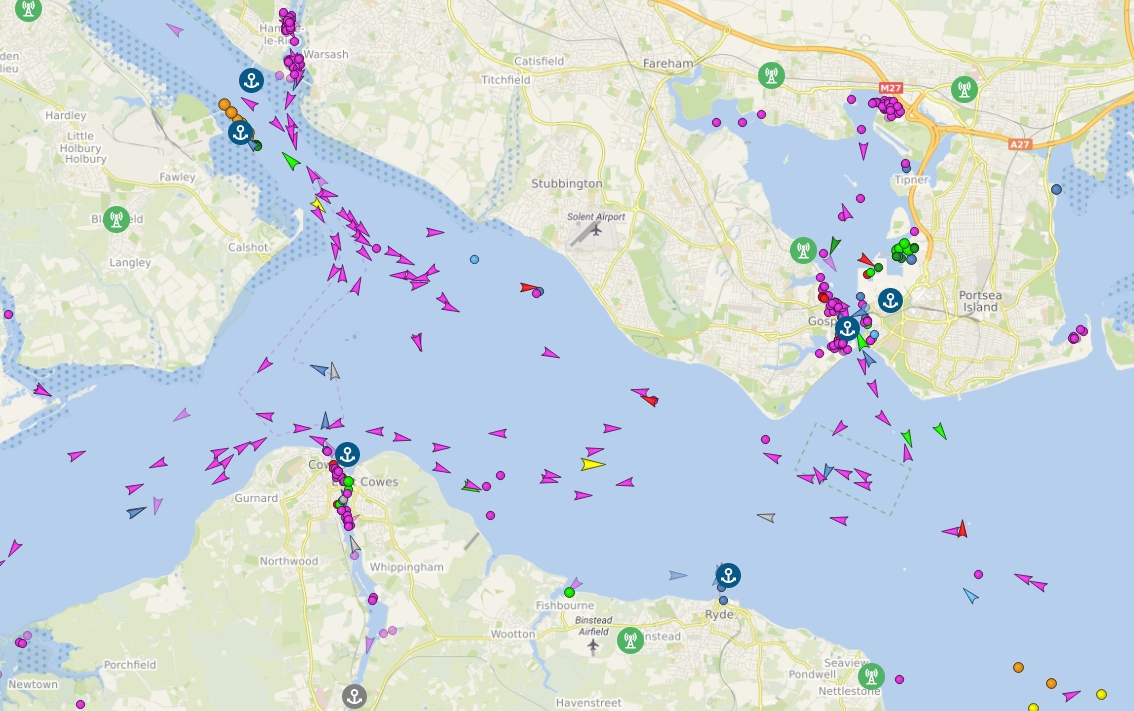
The perspective also revealed that we were, for all intents and purposes, engaged in a giant game of maritime Frogger. For Hovertravel skippers, ferries, freighters, tankers, and yachts, are the screen-traversing amphibian-endangering cars and lorries. Ship Sim included a slowed-down version of ‘Solent Frogger’ (VSTEP simmed Red Funnel ferry and catamaran services between Southampton and Cowes). However, a faithful hovercraft version would, I’m sure, be more engaging.
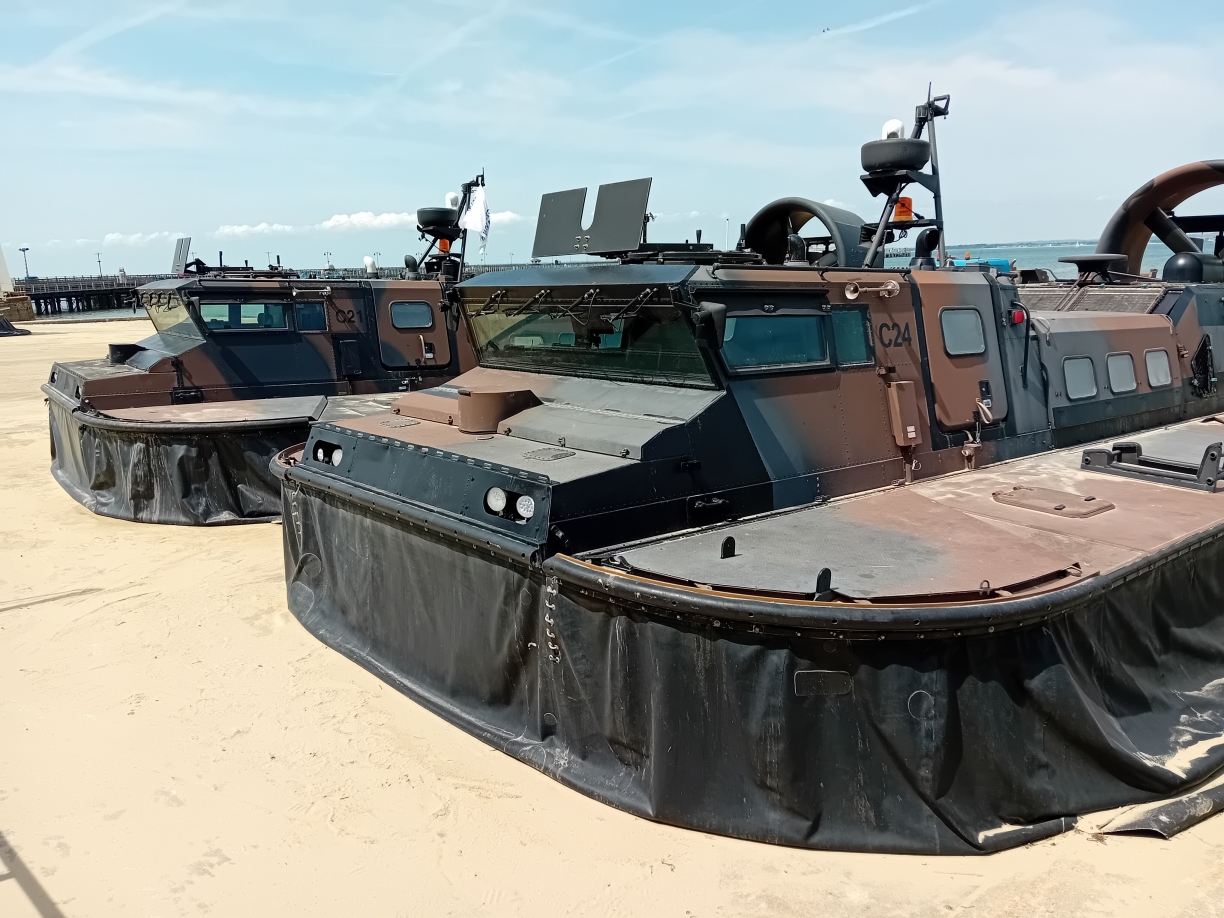
Unexpectedly, Island Flyer’s sister wasn’t the only hovercraft parked at Ryde when I arrived. The two machines pictured above are ex-Royal Marines Landing Craft Air Cushion (Light).
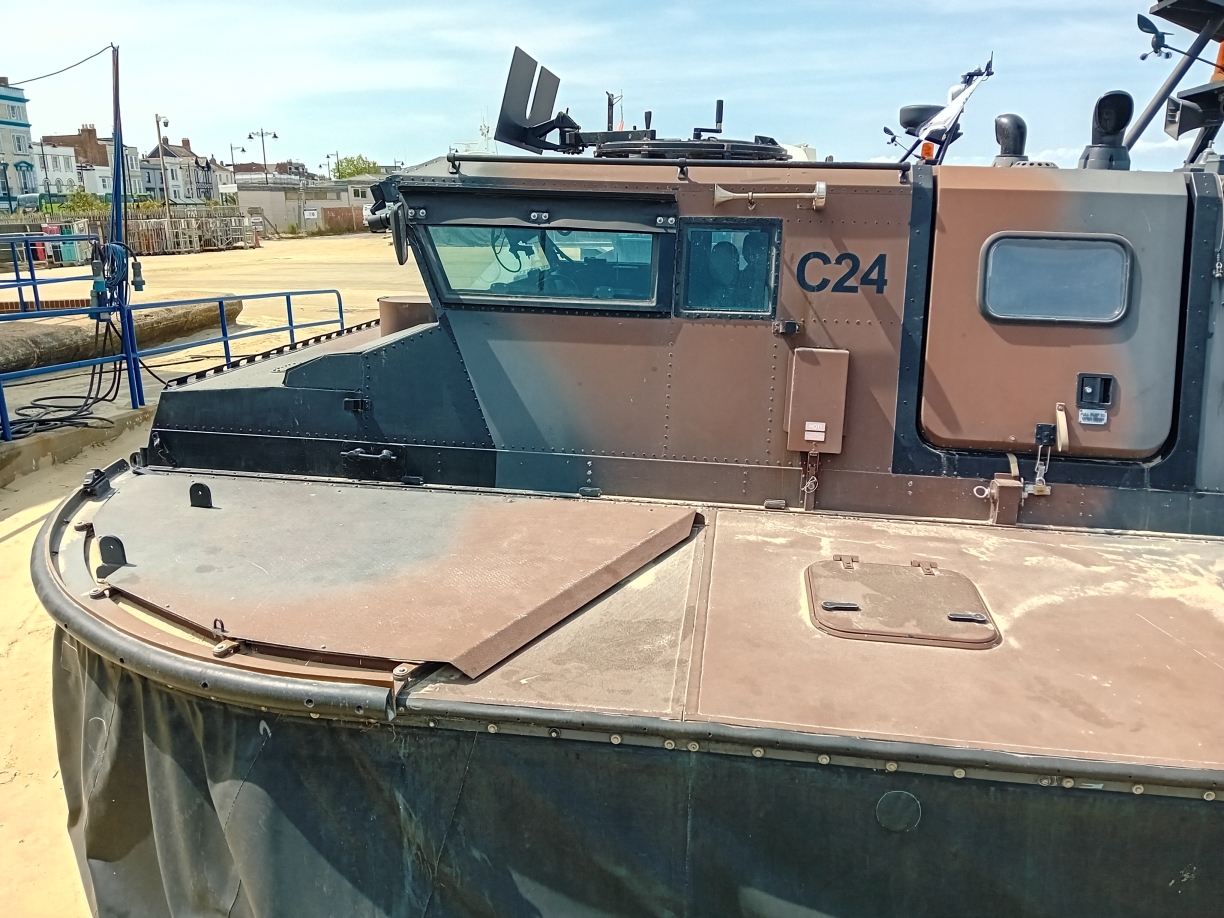
According to the helpful staff member I quizzed, having been refurbished by Griffon after their time with the Royal Navy, C21 and C24 have now found new owners. Judging by the fact that they’ve been test-driven by Pakistani marines during their time on the Island, those new owners could well be the Pakistan Navy.
I don’t much care whether the rides included in the PC’s first dedicated hovercraft sim carry virtual warriors or virtual holidaymakers. The important thing is that they handle, sound, and look like their inspirations, and, ideally, come with environments that are fun to explore and challenging to navigate. Watching, feeling, and tasting* Island Flyer negotiate beaches and weave through Solent traffic yesterday, has convinced me piloting a well-simmed hovercraft would be a blast.
* Standing on the railway footbridge at Ryde during one departure, my face was gently exfoliated by prop-stirred sand and spray.

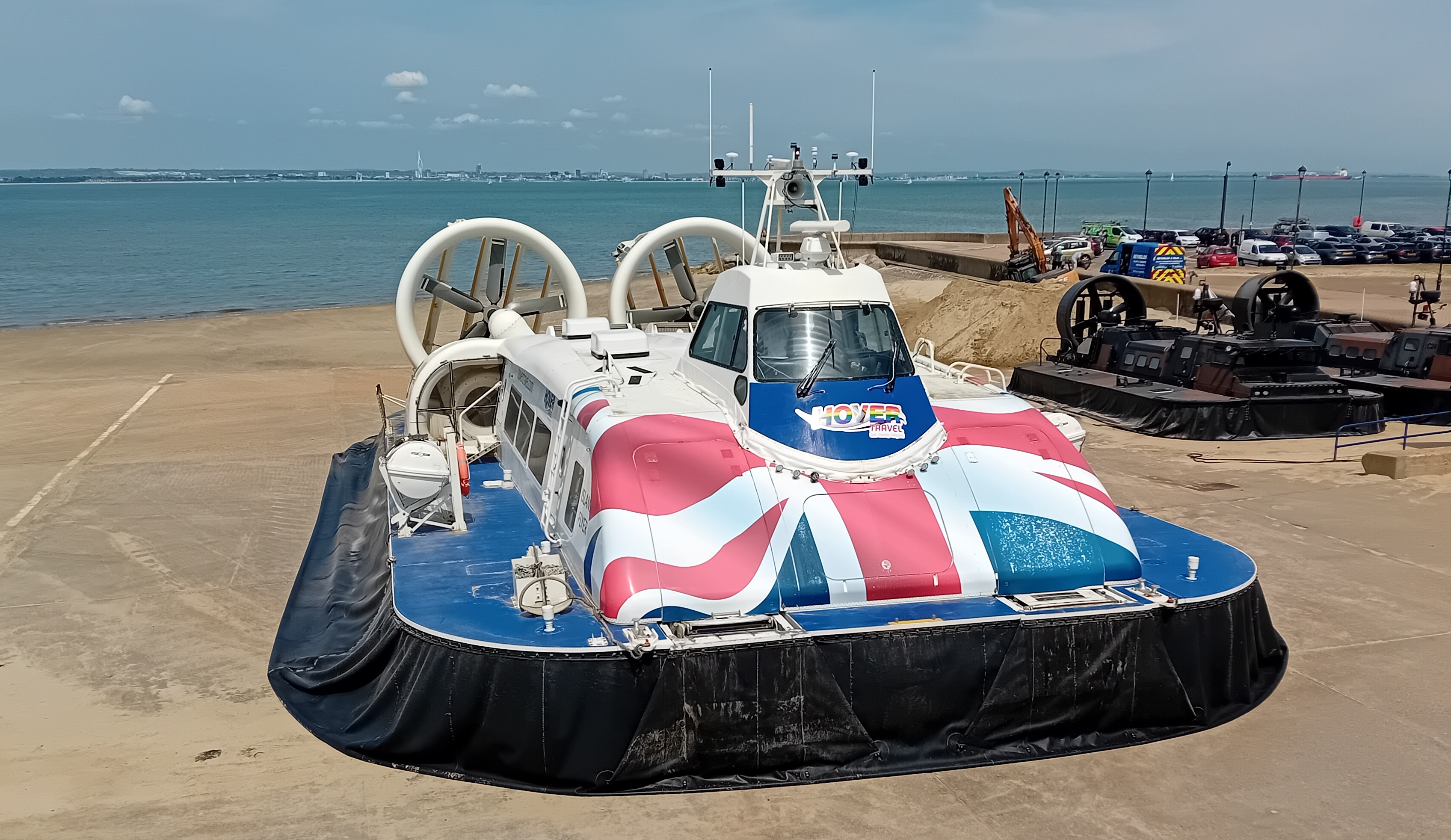
A) I guess Windows ’95’s Hover! ain’t ever been beat.
B) Quotes: “are ex-Royal Marines Landing Craft Air Cushion (Light)”
“after their time with the British Army, C21 and C24”
Wasn’t there an ex-Marine who ran the Splat the Rat stand at the Flare Path Summer Fete who could patiently explain that Jollies aren’t Pongos? I’ve come over all faint.
(Or else ask the cherry berry who was in the unisex Kissing Booth)
>>Jollies aren’t Pongos
A senior (service) moment! Fixed.
A hovercraft game plus light economics simulator a la The Brew Barons would be a hoot.
A loong time ago, when these things plied their trade across the Channel, I was returning to Margate in near-storm conditions (touch and go whether we “flew” or not) and sea/airsickness was very prevalent amongst the passengers (and some of the crew)
There is a game on Steam called Soviet Monsters: Ekranoplans (not quite hovercraft, but close), but the reviews are atrocious.